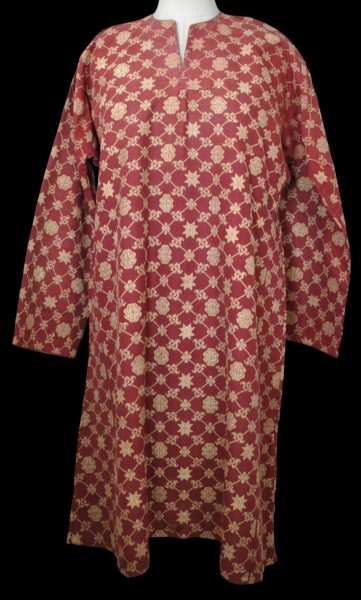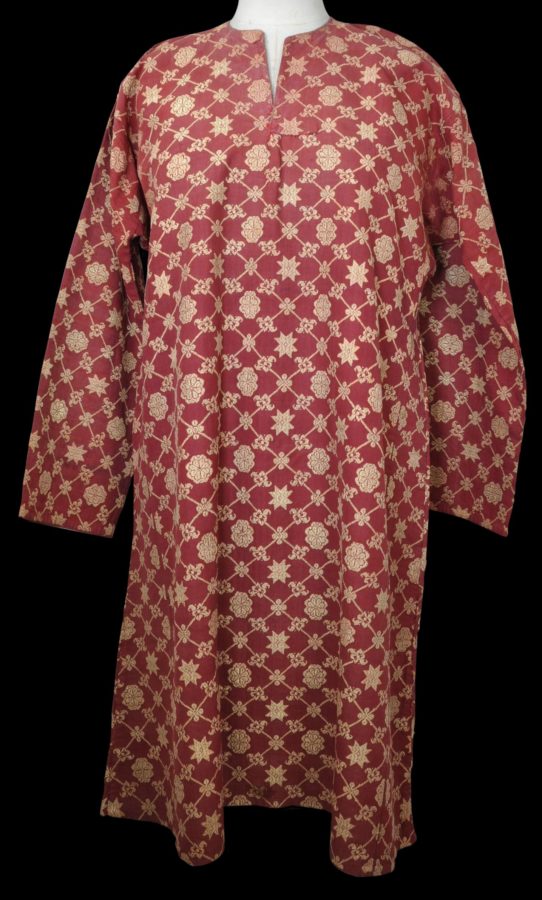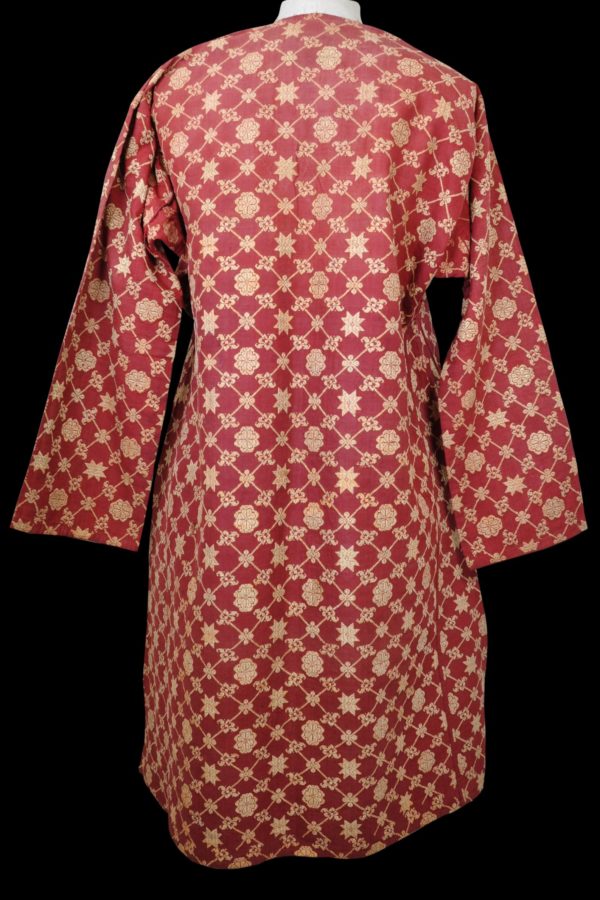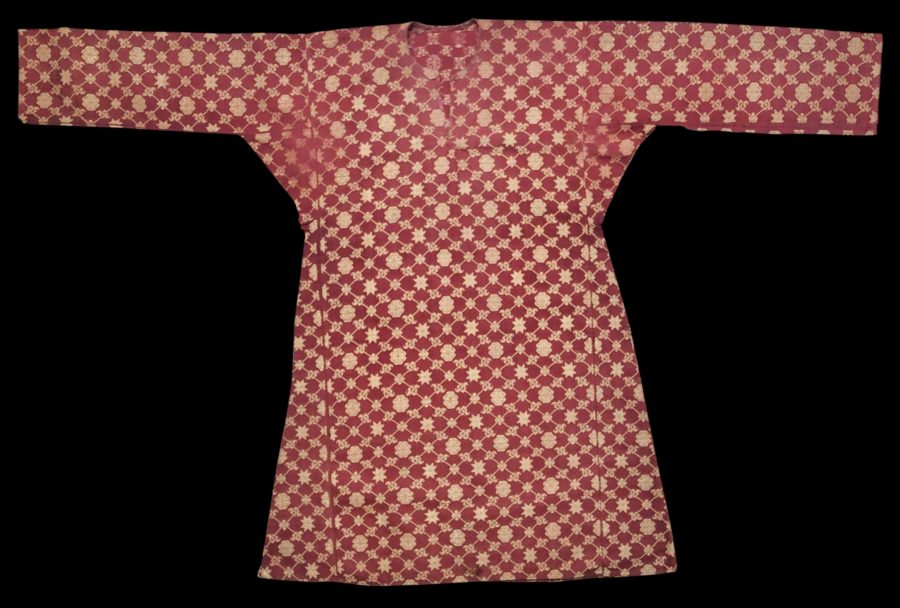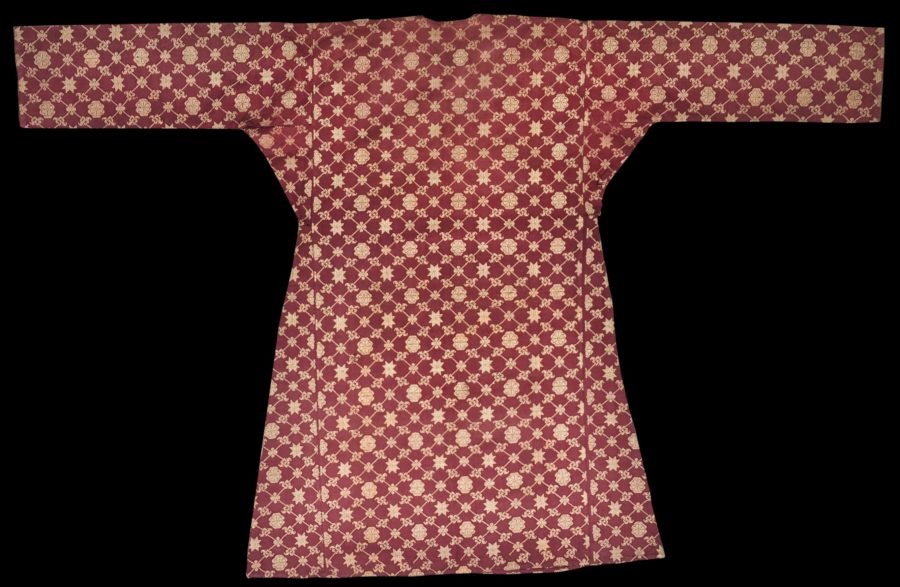This relatively long tunic known as a baju kurung, is from the Malay people of the Palembang region of South Sumatra. It is of red silk and cotton woven with supplementary weft gold-wrapped thread. The pattern is one of repeated stylised flower blossom motifs in a grid pattern, the same pattern being apparent front and back.
Maxwell (2003, p. 253) suggests that such a garment was influenced by Chinese dress and was first adopted by Malay women in the courts of coastal Southeast Asia.
A Malay jacket or baju of similarly patterned and coloured textile and attributed to the late 19th century Malay Peninsula is illustrated in Lee et al (2016, p. 99). Rodgers et al ( 2007, p. 36) illustrate a similar piece of cloth as that used here which they attributed to ‘probably’ Palembang, circa 1850.
The jacket here is in fine condition. There is no insect damage. Fading is relatively minor. There are no repairs and no tears.
References
Lee, P. et al, Port Cities: Multicultural Emporiums of Asia 1500-1900, Asian Civilisations Museum, 2016.
Maxwell, R., Sari to Sarong: Five Hundred Years of Indians and Indonesian Textile Exchange, NGA, 2003.
Maxwell, R., Textiles of Southeast Asia: Tradition, Trade and Transformation, Periplus, 2003.
Rodgers, S., A. Summerfield & J. Summerfield, Gold Cloths of Sumatra: Indonesia’s Songkets from Ceremony to Commodity, KITLV Press, 2007.


